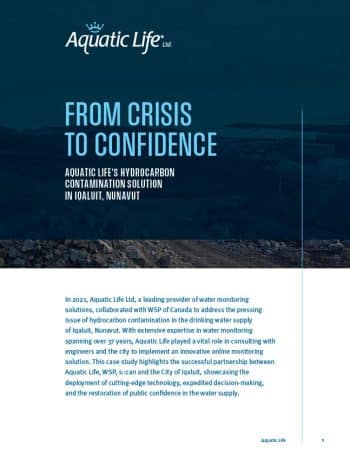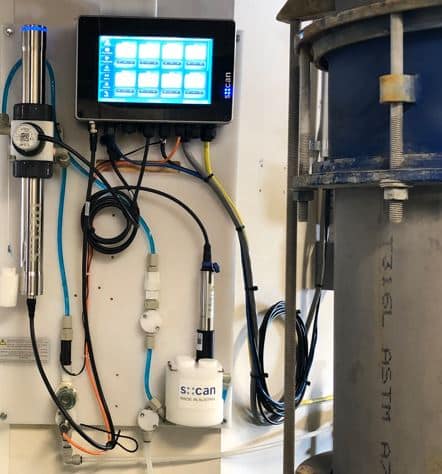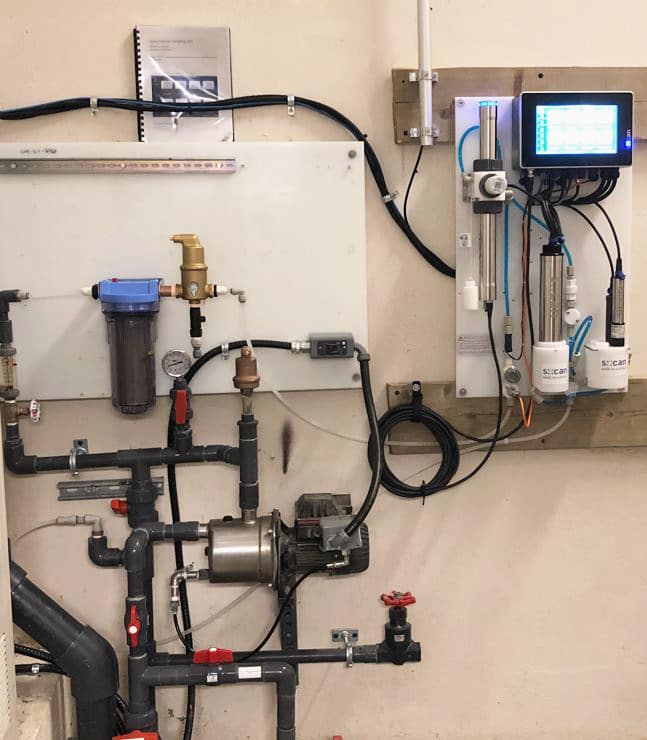In 2021, Aquatic Life(Opens in a new tab or window) Ltd, s::cans longtime partner in Canada and a leading provider of water monitoring solutions, collaborated with WSP of Canada to address the pressing issue of hydrocarbon contamination in the drinking water supply of Iqaluit, Nunavut. With extensive expertise in water monitoring spanning over 37 years, Aquatic Life played a vital role in consulting with engineers and the city to implement an innovative online monitoring solution. This case study highlights the successful partnership between Aquatic Life, WSP, s::can and the City of Iqaluit, showcasing the deployment of cutting-edge technology, expedited decision-making, and the restoration of public confidence in the water supply.
From crisis to confidence – contamination solution in Iqaluit, Nunavut

From crisis to confidence - contamination solution in Iqaluit, Nunavut
Background
Residents of Iqaluit reported taste and odor issues with their drinking water in October 2021, leading to immediate action by WSP and Aquatic Life. An engineering team was dispatched to the site, revealing subsurface tanks were contaminated with an unidentified hydrocarbon. In response, a precautionary “Do Not Consume” order was issued by the Chief Public Health Officer. Recognizing the complexity of Iqaluit’s crisis, the engineering team worked with all levels of government, the Canadian Armed Forces and local Indigenous groups to tackle the problem head on.
Solution
Aquatic Life swiftly implemented a micro::station(Opens in a new tab or window), equipped with a spectro::lyser(Opens in a new tab or window), for real-time monitoring of hydrocarbon contamination, see picture on the left. The Aquatic Life team collaborated with s::can and WSP engineers to develop custom hydrocarbon algorithms, enabling precise analysis and detection of contaminants. By incorporating advanced technologies and leveraging extensive water monitoring expertise, Aquatic Life enabled prompt decision-making and optimal process control.
The picture on the right shows the micro::station monitoring the final treated water leaving the plant. It measures hydrocarbons, turbidity, organics, color, chlorine, UVT, UV254, pH, fluoride, temperature, and spectral alarms. The system has remote connectivity which allows for easy support between service contract visits.
Conclusion
Aquatic Life’s collaboration with WSP and the City of Iqaluit in addressing the hydrocarbon contamination crisis demonstrates a commitment to delivering cutting-edge water monitoring solutions and expert consulting. By deploying the s::can micro::station and leveraging decades of expertise, Aquatic Life enabled real-time monitoring, expedited decision-making, and helped restore public confidence in the water supply. This case study serves as a testament to the transformative impact of innovative water monitoring technologies in addressing complex challenges and supporting regulatory compliance in remote regions such Northern Canada.


